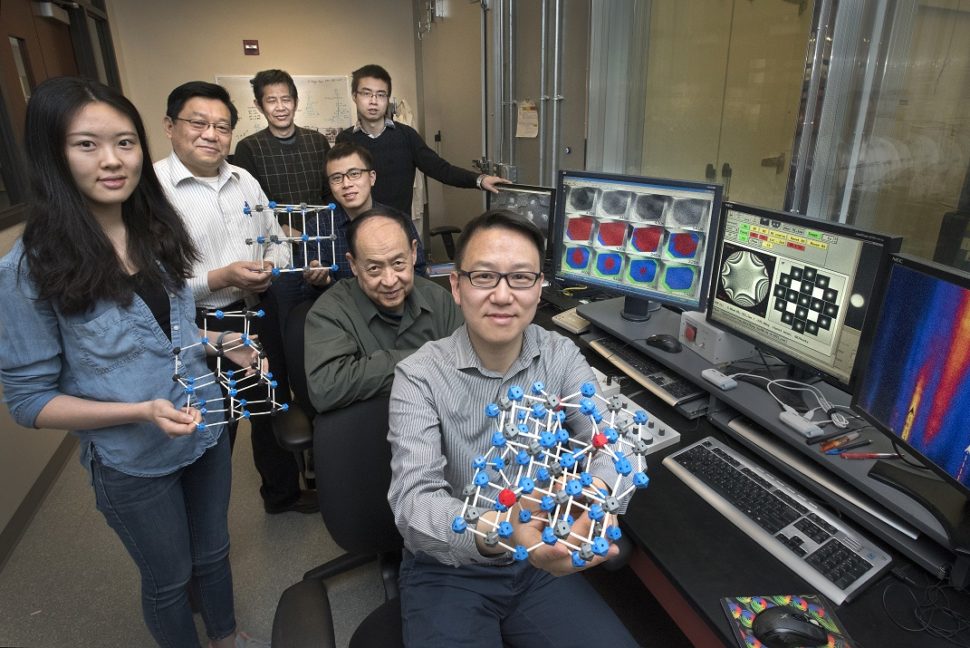Researchers with the U.S. Department of Energy (DoE) developed new fuel cell catalysts that outperform previous iterations. The new method allows for the use of less platinum in fuel cell production. As a result, a new step toward commercial fuel cells has been taken.
Fuel cells can provide clean and efficient electricity, but the cost and durability of the cells keep them from being a commercially viable. Much of the cost comes from the need for expensive platinum(Pt)-based nanoparticles. These serve as catalysts in the reaction that converts energy from easily available fuels such as hydrogen, methanol, and ethanol.
Before fuel cells can become commercialized, they will need to incorporate less expensive metals as a catalyst, but to date, the most successful catalysts use a Pt-based core-shell structure. To make matters worse, that shell is thin and incomplete, which leads to a short lifetime for an expensive product.
The fuel cell catalyst boosts the oxygen reduction reaction (ORR).Click To TweetFuel cell catalysts boost the oxygen reduction reaction (ORR). Recently, researchers working with the DoE have developed catalysts with the highest ORR activity to date using a platinum shell surrounding a platinum and lead (Pb) alloy core.
Finding the Ideal Catalyst for Fuel Cells
Previous studies have shown that ORR activity can be improved by compressing the Pt atoms into a lattice surface plane called Pt(111). The mesh is formed by adding metals smaller than Pt to the shell’s core, which has been shown to enhance ORR activity. However, the new method uses lead, which is larger than Pt.

According to Dong Su, a co-author of the study, “The ideal ORR catalyst needs to help break bonds (between oxygen molecules) and form bonds (between oxygen and hydrogen), so oxygen can’t be too strongly or too weakly bound to the platinum surface. Scientists have focused their research on the compressively strained Pt(111) surfaces, in which Pt atoms are squeezed across the surface because the oxygen binding energy is optimized. In general, scientists thought that tensile strain on the same surface plane would result in overly strong binding of oxygen and thus hinder the ORR reaction.”
Adding Pb to the core of the Pt shell showed that introducing a significant tensile strain along one direction of a different plane such as Pt(110) can improve ORR catalytic activity.
Distinguishing Nanoplates and Durability
After researchers had synthesized the nanoplates, Su took up the task of characterizing the structure and elemental composition of the nanoplates at the Center for Functional Nanomaterials. He confirmed the core-shell structure and the composition and sequence of the atoms in the plates by using electron diffraction patterns and images from high-resolution scanning transmission electron microscopy (STEM), which revealed the relative positions of the atoms. Su then used a technique called electron energy-loss spectroscopy to measure the change in energy of the electrons after they interacted with the nanoplates, which he used to verify that the core contained Pt and Pb while the shell contained only Pt.
The team used Su’s information to distinguish how the nanoplates formed with the individual Pt and Pb atoms. The surface planes that formed were not the traditional Pt(111), but Pt(110). Furthermore, the planes were under biaxial strain, which is a compressive stress in one direction with a tensile strain in the other, originating from the PtPb core of the nanoplates.
With these new nanoplates, the team found that fuel cells had little to no change in the amount of electrical current generated after 50,000 cycles of voltage cycling. To give an example of how this compares with other catalysts, many lose more than half of their initial current generated after 50,000 cycles. According to Su, “the relatively thick and complete Pt layers play an important role in protecting the core.”
The team’s nanoplates have achieved one of the highest ORR activities ever recorded, given the amount of Pt used. In addition, they show high stability in oxidation reactions of methanol and ethanol. Scientists calculated the binding energy between oxygen atoms and Pt atoms on the surface of the plates to confirm that the tensile strain of the Pt(110) surface was responsible for the improved ORR activity.
Eventually, the catalysts will need to be tested in larger fuel cell systems where more practical variables such as pollutants that can impact surface reactivity can be introduced.



















Comments (0)
Most Recent